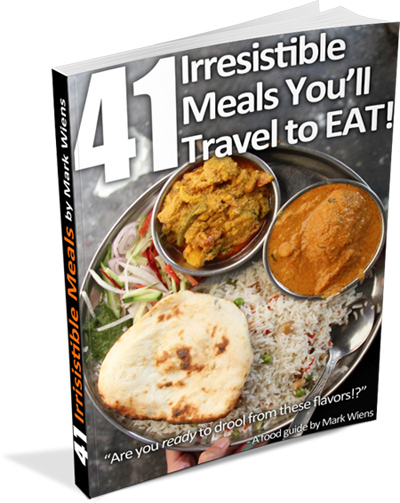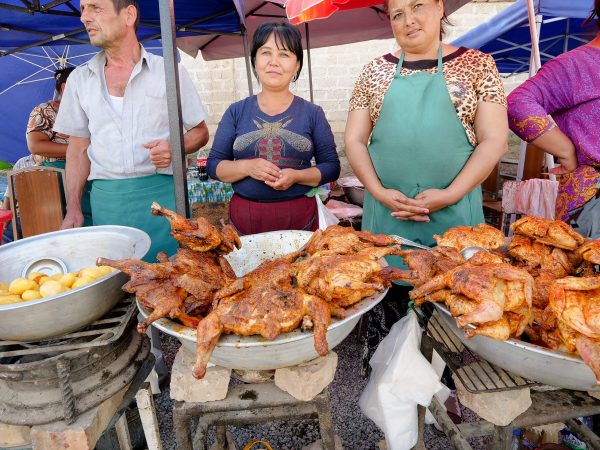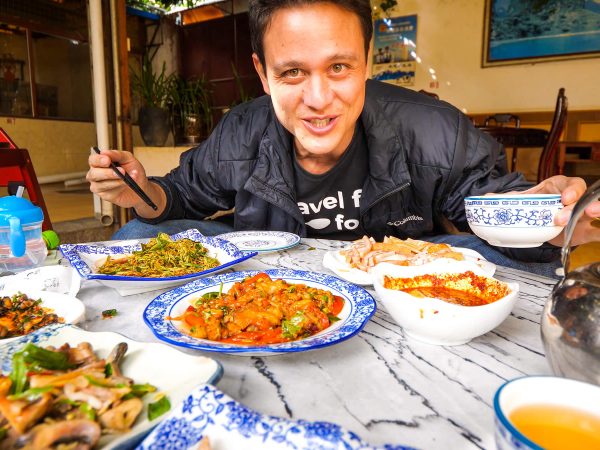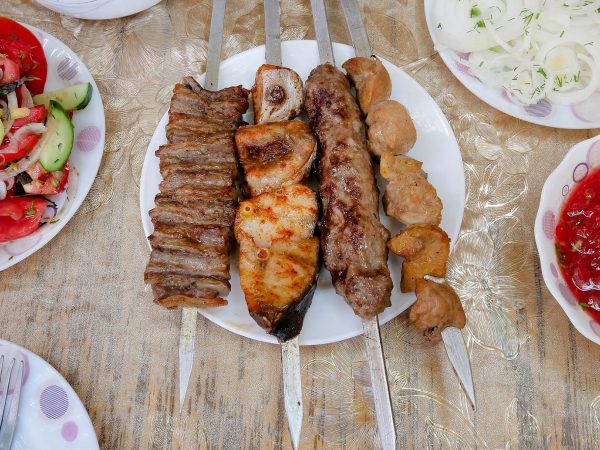

I was exploring the ancient narrow lanes of Varanasi, searching for something delicious to eat, when a man smiled and cheerfully invited me to his restaurant from across the lane.
He was serving something known as round roti, more commonly known in India as baati chokha.
Soon, I’d find out this was the funeral lane (where bodies were ushered down to the Ganges River).
But more on that later.
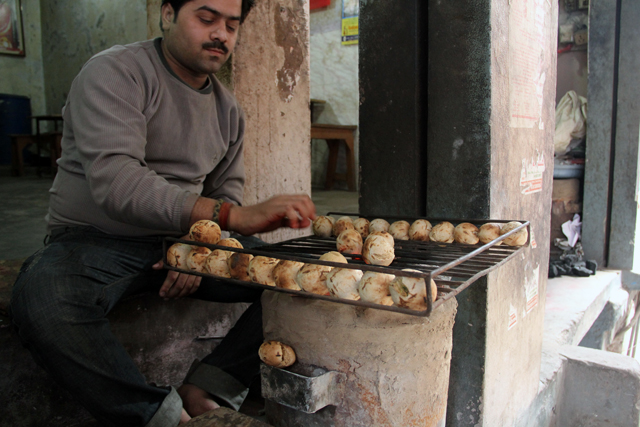
Perched in a window, the man sat in front of the grill, facing the alley lane while rolling and grilling up his spheres of dough.
Just like many of the Kolkata street food vendors, this man was excited to serve me, and he also wanted to explain to me exactly what he was cooking.
Though he was chewing a mouthful of paan, saliva nearly dripping off his lips, I tried to listen.
Get exclusive updates
Enter your email and I’ll send you the best travel food content.
“This is round roti, baati chokha,” he said. “There is garam masala inside.”
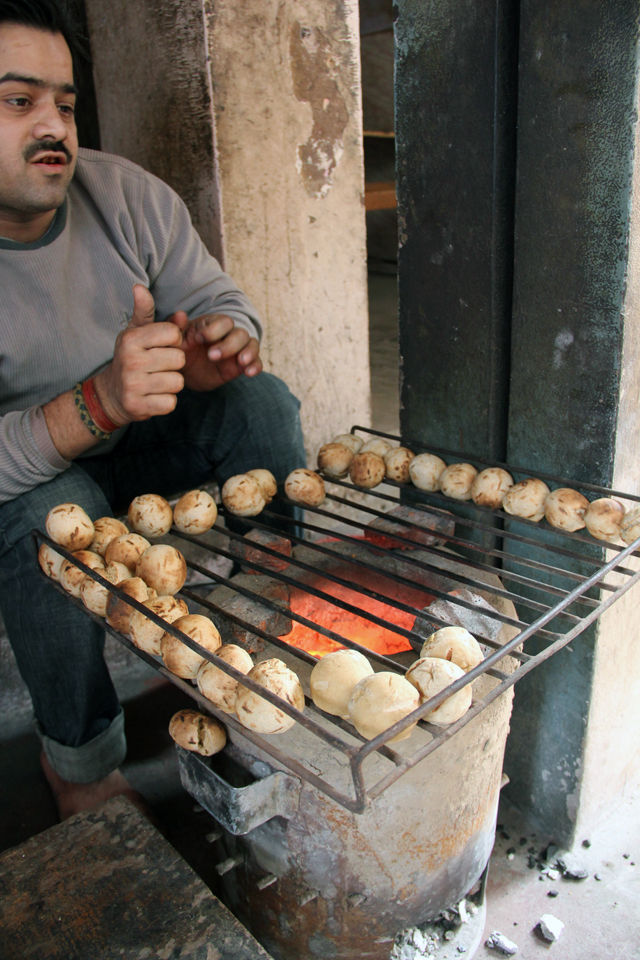
A baati chokha, or round roti, is basically a ball of dough that’s filled with spices and grilled over charcoal. From the grilled char, it’s slightly crunchy on the outside, but really flavorful from the addition of spices.
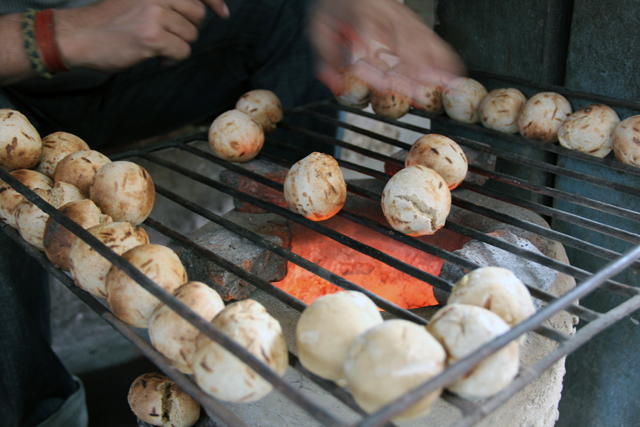
The round roti balls are moved around the grill every few seconds so as not to burn.
The finished ones are placed on the edges of the grill, remaining warm, until being ordered and served (the good thing is, they stay hot and fresh).

When you order baati chokha, he pulls a couple rounds off the grill, places them on a little paper plate (not a leaf bowl this time), adds a scoop of sauce, some red onions, and a chili on the side.
The sauce was a flavorful blend of what tasted like mashed potatoes mixed with lots of spices, oil, and coriander. It was perfect for the dry roti balls.
As I broke my first roti ball in half, generously dipped it into the sauce, and inserted the bite into my mouth was when I heard the chanting and saw a crew of men running down the lane carrying a bamboo stretcher with an orange cloth wrapped dead body on top…
I literally had to duck my head to avoid colliding with the corpse.
Despite the deliciousness of the baati chokha, I suddenly wasn’t quite as hungry as I previously was.
So I had another bite, and boom, another funeral procession and corpse came straight through the lane again, but this time I was more prepared for it.

It’s quite an interesting experience to be munching on delicious Indian street food while sharing the lane with corpses being ushered down to the Ganges River to be cremated.
So if you do visit Varanasi, India, take a walk down Manikarnika burning ghat lane (heavily guarded by armed military) and you’ll find the man grilling baati chokha.
He’ll probably say a gurgled “hello,” from his mouthful of areca nut and tobacco, and you may have to duck under a corpse or a few, but his snack is sure tasty!
Get exclusive updates
Enter your email and I'll send you the best travel food content.
